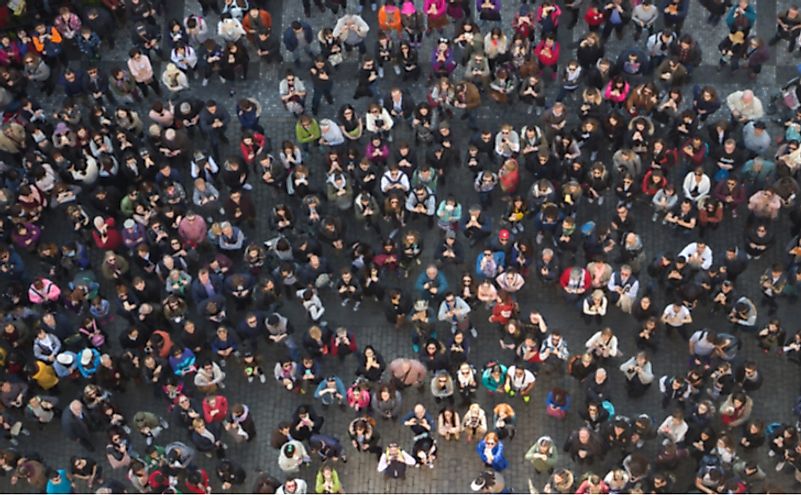What Is The Difference Between A Community And A Population?

In sociology, a population is the number of humans residing within a specific area. Demography is the study of a population within a town, city, region, or country, and censuses are conducted periodically to determine the size and diversity of a population. In biology, a population is defined as the number of organisms of the same species living within a particular geographic area that are capable of interbreeding. The number of individual members of a species determines the size of the population, which also varies due to deaths, births, emigration, and immigration. Other features of a population include its distribution, density, dynamics, and growth. A population competes for limited resources its geographic boundaries.
A community is a social unit within a population that shares certain features such as identity, language, religion, customs, values, and norms. The relations extend beyond genetic ties, and the level varies to include family, work, home, or government, and the interaction between members of a community depends on the cohesiveness of the individuals. A community is not limited to an individual species but involves the interaction between different types of species living within a specified geographic boundary. Interspecific interaction includes prediction, competition, parasitism, commensalism, and mutualism.
Differences Between A Community And A Population
A population and a community are two levels of ecology that consist of several groups of organisms living within a defined ecosystem at a particular period. They are essential when describing the relationship between organisms in an ecosystem.
Definition
A population is the number of individuals of the same species that can successfully interbreed and are isolated from other groups, while a community is a group of individuals or populations of different species occupying the same geographic area at a particular time. Members of a community share common features and are interdependent.
Size
In most cases, several populations make up a community, but in some cases, several communities make up a population. It depends on the diversity of the population and the level of interaction. A census is conducted periodically to determine a population's size.
Behavior and Morphology
The individuals of a population are behaviorally and morphologically similar because they are of the same species and share similar features. A community is composed of several populations with varying characteristics and can involve different species of interacting organisms.
Interbreeding
Individuals of a population can freely interbreed and raise offsprings because they are of the same species, but individuals of a community may or may not interbreed.
Competition
Individuals of a population experience an intra-specific competition for similar resources, while members of a community have an inter-specific competition for diverse resources. The relationship in a community can vary depending on the individual and can include predation.











